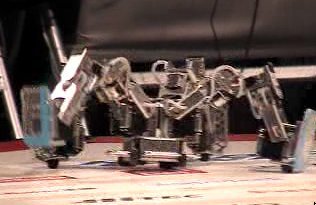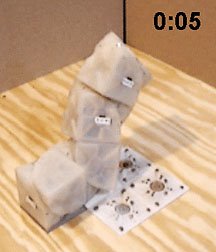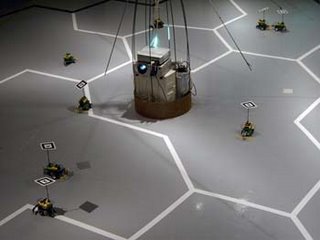Bion - Adam Brown and Andrew Fagg
“Bion” is an interactive installation that explores the relationship between humans and artificial life. “Bion” makes reference to an individual element of primordial biological energy identified as orgone by the scientist Wilhelm Reich. The installation is composed of hundreds of mass-produced, 3-dimensional glowing and chirping sculptural forms. Each bion, measuring approximately 4×3x2 ½ inches is an synthetic “life-form” fitted with an audio speaker, blue lights (LED’s), and multiple sensors. The bions are suspended by fine gage wire connected to panels that are attached to the ceiling. When installed the panels form clusters of bions arranged at different elevations. Each bion has the ability to communicate with the others and with viewers that enter the space.







